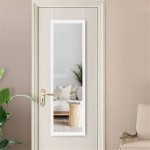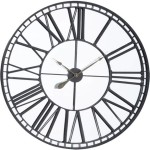How To Cut a Mirror Without a Glass Cutter
Cutting a mirror without a dedicated glass cutter might seem daunting, but with the right techniques and tools, it’s achievable. While a glass cutter offers the cleanest and most precise cuts, alternative methods can be employed for simpler projects or in situations where a specialized tool isn't available. These methods require careful execution and attention to safety precautions.
1. Scoring with a Hard, Sharp Object
This method utilizes a hard, sharp object to create a score line along the desired cutting path. Suitable tools include a tungsten carbide scribe, a diamond-tipped pencil, or even a hardened steel nail. The key is to create a single, continuous, and firm score line. Multiple passes can weaken the glass unevenly and lead to uncontrolled breakage.
Begin by cleaning the mirror surface thoroughly. Any dust or debris can interfere with the scoring process and cause the score line to deviate. Mark the cutting line clearly with a marker or masking tape. Applying light pressure, run the chosen scoring tool along the marked line in one smooth motion. Avoid stopping or lifting the tool mid-stroke. The goal is to create a shallow, consistent groove in the mirror's surface.
2. Applying Controlled Pressure for a Clean Break
Once the score line is established, the next step involves applying controlled pressure to separate the mirror along the score. This can be achieved through several methods.
One method involves placing the scored mirror on a flat surface with the score line directly over the edge. Apply gentle, even pressure on both sides of the score line, pushing downwards. The mirror should ideally break cleanly along the score. Alternatively, small pliers or specialized glass breaking pliers can be used to grip the edges of the mirror along the score line and gently apply outward pressure.
For smaller pieces, gently tapping the underside of the score line with a small hammer can also initiate a break. This requires practice and control to avoid shattering the mirror. Start with light taps and gradually increase the force as needed.
3. Utilizing Heat for Controlled Fracturing
Applying heat can create stress in the glass, making it more susceptible to breaking along a scored line. This method is particularly useful for curved cuts. A soldering iron or a small butane torch can be used to apply heat along the score line. Extreme caution is necessary to avoid overheating the glass, which can lead to unpredictable cracking.
After heating the score line, quickly apply a damp cloth or ice cube to the heated area. The rapid temperature change creates a localized stress fracture, encouraging the mirror to break along the score. This method requires practice and careful control of the heat application.
4. String Cutting Technique for Curved Cuts
For curved cuts, a string soaked in a flammable liquid can be employed. Tie the string tightly around the mirror along the desired cutting path. Soak the string in acetone or a similar flammable liquid. Ignite the string and allow it to burn completely. Immediately after the flame extinguishes, apply a damp cloth or ice cube to the heated area. The rapid cooling will induce a stress fracture along the heated path. This method requires careful attention to safety and should be performed in a well-ventilated area, away from flammable materials.
5. Working with Thick Mirrors
Cutting thicker mirrors without a glass cutter requires more effort and control. Scoring must be deeper and more consistent. Applying pressure for breaking requires greater force and may necessitate the use of pliers or specialized tools. The heat method is generally less effective with thick mirrors due to the increased thermal mass.
For very thick mirrors, it is generally recommended to consult a professional glass cutter. The risk of breakage and injury increases significantly with thicker glass, and specialized equipment and expertise are often necessary for clean and safe cuts.
6. Safety Precautions
Working with glass, even mirrors, involves inherent risks. Always wear safety glasses to protect your eyes from glass shards. Gloves are also recommended to protect your hands from sharp edges and prevent cuts. Work in a clean, well-lit area to ensure clear visibility and reduce the risk of accidents.
Dispose of broken glass carefully, wrapping it in thick paper or cardboard and clearly labeling it as broken glass. Never dispose of broken glass in regular trash bins without proper containment. Keep children and pets away from the work area during the cutting process and afterwards during cleanup.
7. Understanding Limitations
While these methods can be effective for cutting mirrors without a glass cutter, it's important to understand their limitations. These techniques are generally best suited for simpler, straight cuts, and thinner mirrors. Complex shapes and thicker mirrors often require the precision and control offered by a dedicated glass cutter. For intricate projects or when working with expensive mirrors, professional assistance is recommended.

3 Best Ways To Cut Glass Without Glasscutter

How To Cut A Mirror Without Glass Cutter 13 Steps

Glass Cutting Trick Without Cutter With A Knife

How To Cut A Mirror Without Glass Cutter 13 Steps

How To Cut A Mirror Without Glass Cutter 13 Steps

3 Ingenious Ways To Cut Glass Without A Cutter Doityourself Com

How To Cut A Mirror Without Glass Cutter 13 Steps

How To Cut A Mirror Comprehensive Guide

How To Cut Glass Without A Cutter Here Is

Cutting Glass With A Cutter Or Without It Learn The Ropes








